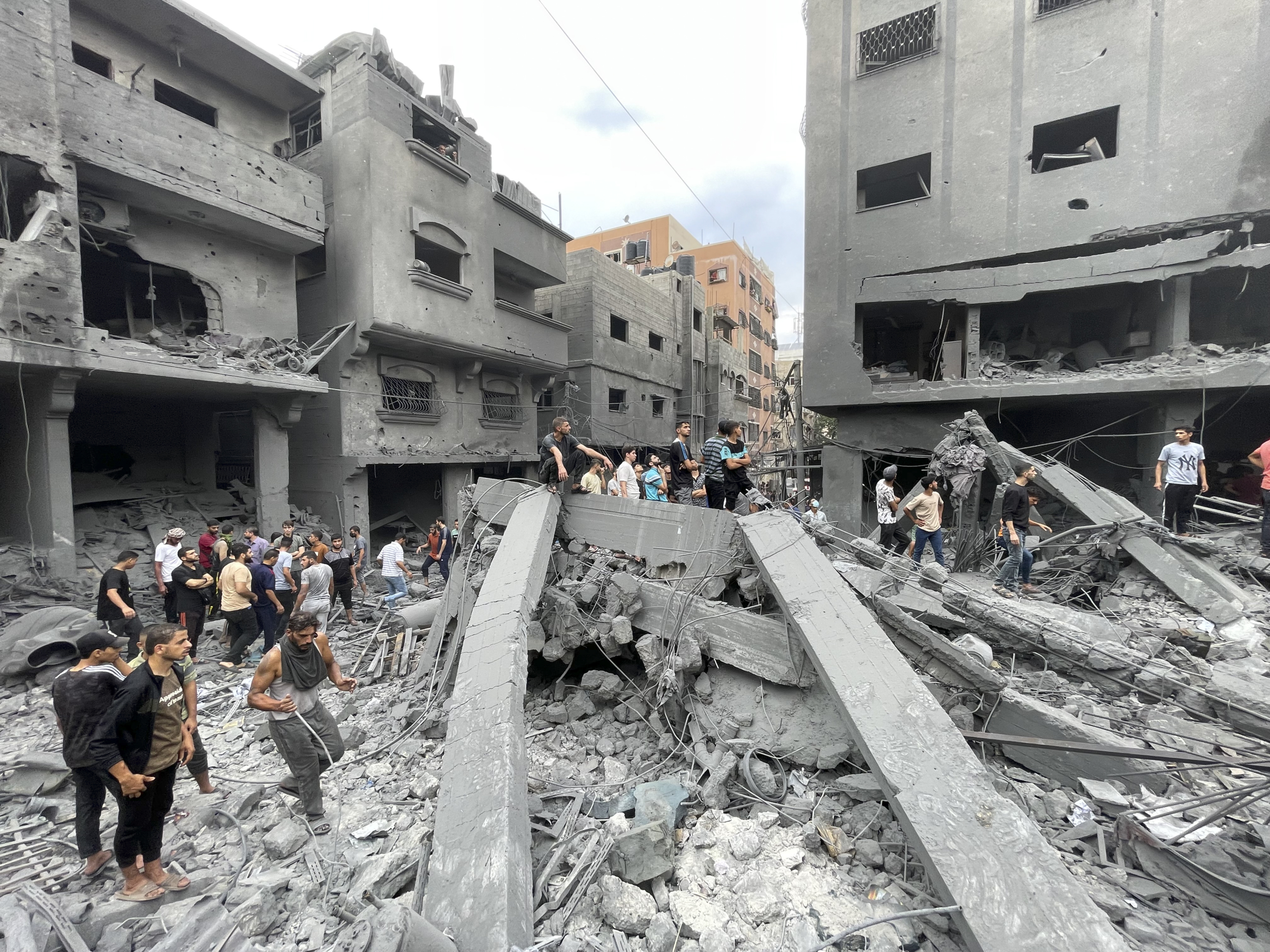Since early October, when conflict between Israel and Palestine spun into relentless war, reporters have been scrambling to verify the details of one attack as another unfolds. Last week, a group of journalists and analysts there and in New York logged in to Zoom for an “emergency press briefing” to discuss where coverage of Gaza has gone wrong. Journalists have not done enough to acknowledge the asymmetry of power in the region, they agreed. “The ability to inflict massive violence, the ability to starve a society, to thirst a society, to completely bombard a society,” Amjad Iraqi—a senior editor at +972 Magazine, a left-leaning outlet based in Tel Aviv—said, “lies with one side and not the other.”
The panelists—including the moderator, Arielle Angel, the editor in chief of Jewish Currents—shared an anti-occupation view. “We’re still learning what happened inside Israel on October 7,” she said. “There’s a need to report on those things accurately and compassionately while also making sure we’re not feeding a system that is trying to justify what is happening in Gaza now.”
The conversation turned to the Hamas incursion into Israel known as Operation Al-Aqsa Flood. “The scale and the ferocity of that massacre is very, very extreme,” Haggai Matar, the executive director of +972, said. “The number of people slaughtered and killed in just one day—that Saturday two and a half weeks ago—is more than all the Israelis killed during the second intifada, back in the early two-thousands, over five years.” The result “has fractured the Israeli experience, our understanding of our reality.”
“Palestinians have never had, at least for the past decades, a feeling of safety, security, of having any sort of defense against this regional power, Israel,” he added. Matar, who has been covering the conflict for local Hebrew-speaking audiences as well as for international readers, said that when covering the attack against Israelis it’s important to remark upon the “fear and that grief and that horror” and, at the same time, to push back “against the attempts to describe the terrible events in the south, one, as out of context, as unprovoked—as some have said.”
A participant in the Zoom posed a question: What do Americans, in particular, need to know? “This is not just an Israeli war with Americans cheering from the background,” Matar replied. Reporters should make clear that the United States is “completely complicit in what Israel is doing,” he said, including financing the war and blocking United Nations resolutions that would allow aid into Gaza.
Diana Buttu—a Palestinian Canadian legal analyst and policy adviser to a think tank focused on Palestinian human rights—said that journalists should make note of how Israel had dealt with Palestinians before October’s burst of violence. “For each and every attack on the people in the Gaza Strip, there’s a boomerang effect for the rest of the Palestinian community,” she said. For weeks now, dozens of Palestinian citizens of Israel have been expelled from universities or otherwise punished for expressing dissenting views of the conflict on social media. Palestinians in the West Bank have experienced an extreme uptick in violence. Yet coverage has largely treated the bombardment as an isolated situation, Buttu said. “It’s so vital to put this in its proper political context.”
Fadi Abu Shammalah—an outreach associate at Just Vision, a nonprofit organization that produces and screens films to “fill a media gap on Israel-Palestine”—joined the call from his parents’ home, in Gaza. He, his wife, and their children fled their house, in Gaza City, to escape the bombings. As the Zoom went on, his internet connection lagged. “This bombing,” he said, “is not like anything we’ve ever seen.”
Abu Shammalah said he wished journalists would more deeply interrogate what it means when the Israeli military attacks a Hamas “target.” Earlier that day, he said, a building had collapsed onto his uncle’s house after being hit by an Israeli air strike. When the building fell, he continued, it killed two children. “It might be that those children were the targets,” he said. “It would be a good question for one of the spokesmen of the Israeli government.”
Yona TR Golding is a CJR fellow.

